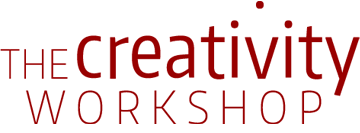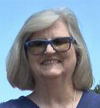For Doctors, Delving Deeper as a Way to Avoid Burnout
By Siddhartha Mukherjee
The New York Times
The anatomy laboratory was always freezing. This was our first course as medical students, and we had split ourselves into groups — four students to every cluster. Each of us carried a copy of “Netter’s Anatomy”; by the end of three months in the lab, the volume would become chemically yellowed by formaldehyde, and to leaf through the tawny, crackling pages would be to feel your fingers becoming slowly embalmed. Our group had three men — me, S. and B. — and a woman, G. We “shared” a 60-something female cadaver whose name we knew by only her initials: M.C. She had died, we were told, of metastatic breast cancer. Eventually, as we dissected her body, we would find misshapen deposits of that cancer in her brain, liver and bones.
We met twice a week in the chilly anatomy lab and had lectures, twice a week, in an auditorium downstairs (each of us was also given a real human skull, in a lacquered mahogany box, to take home to study. “A Gift of Dr. Goldberger, M.D.,” mine said, although I didn’t know whether he had merely purchased the box or donated his cranium). There’s the old, apocryphal story about the law-school professor who announces: “Look to your left and look to your right. One of you is going to flunk out of this school.” But in medicine, we would soon learn, the danger wasn’t flunking out of school. It was a phenomenon called burnout — being propelled to leave the profession after years, or even decades, of training and practice. “Look to your left and look to your right,” the anatomy instructor might have said one morning. “One of you is going to flunk out of your medical life.”
As the weeks drew on in that first year, we began to hear about residents, fellows and even senior doctors who had packed their scalpels and stethoscopes and left medicine. It was the late 1990s, and medical practice was just beginning to be assaulted by a thousand surgical cuts. Hospitals were changing to electronic medical records, and — although E.M.R. had been sold to us as a means to ease work flow and to ensure patient safety (and yes, it did achieve these) — a doctor’s day felt more robotic and dehumanized: The residents in the wards seemed to spend the bulk of their time documenting notes, checking off codes and pressing buttons to generate automated bills. One night, as I recall, I overheard a young resident breaking down in tears, her face silhouetted against the sharp light of the terminal as she typed manically. “I have spent two nights in the hospital and I haven’t even touched a patient. This was not what I came here to do.”
In the midst of all this tumult, various permutations of our small anatomy group kept meeting, once every so often, for a quickly snatched coffee in the hospital cafeteria. We talked about how overworked we felt, about our growing discontent with medicine, about our detachment from our patients and about our fraying relationships with other doctors. By then, our paths had drifted apart: B. had skipped a year ahead and was soon entering a fellowship in hematology and oncology; S. had gone off to a lab to finish his Ph.D. in the neurosciences; G. was training to be a psychiatrist. But the three months that had stitched us together with common purpose — dissecting bodies by day and our souls by night — had somehow fastened us together and given us a sense of direction. We had been annealed, like a metal rod that had been broken, melted and fixed. We would never burn out, we reassured one another (albeit tacitly) during those meetings. We’d see one another again in 50 years, on the other bank of our professional lives.
In 1981, the psychologist Christina Maslach, working with several colleagues, set out to create a test to measure occupational burnout. Eventually termed the Maslach Inventory, the scale assessed the risk of burnout by testing subjects along three basic dimensions: emotional exhaustion, depersonalization and personal accomplishment. The first set of questions, nine in total, measured the feeling of being chronically overextended or emotionally fatigued in the workplace. The second, with five items, tried to capture the feeling of becoming detached or disconnected from the recipient of your services: toddlers in the case of kindergarten teachers, or patients in the case of doctors (“I haven’t even touched a patient,” as the resident put it). The final dimension that Maslach identified, through eight questions, was a loss of personal accomplishment, a feeling that nothing was being achieved.
Perhaps Maslach was inspired by Viktor Frankl’s book “Man’s Search for Meaning.” An Austrian neurologist and psychologist, Frankl had been sent to the Auschwitz concentration camp and then held at Kaufering, a camp affiliated with Dachau. He became preoccupied with the experience of survivorship: What allows some humans to acquire resilience in the face of the most brutal and dehumanizing experiences? Frankl traced the roots of resilience not to success or power but to a sense of purpose and the acquisition of meaning. Later writers, including Daniel Pink, expanded Frankl’s concept of meaning along three dimensions: purpose, mastery and autonomy. We acquire resilience when we find purpose in our work. We seek mastery — expertise, skills, commitment and recognition — in our domains. And we need autonomy — independence — in what we do.
What happened to our anatomy group? B. finished his residency swiftly and dove headlong into translational research (“translating” insights from basic sciences into human therapeutics). He now ranks among the world’s authorities on a group of strange, recently defined diseases in which a single cell can take over the whole blood system, hovering on the verge of cancer but never quite tipping into frank malignancy. S. is largely a laboratory-scientist-cum-doctor who tries to understand how tumors become metastatic. G., whom I am least in touch with, is a psychiatrist who specializes in a particular area of children’s and adult’s anxiety disorders. My own path meandered and trifurcated: I run a laboratory with a focus on leukemias and stem cells; I write books; I run trials and see patients, but in a capacity that doesn’t involve typing endless notes into computers. Other doctors, who didn’t have research-oriented practices, enhanced their professional lives by concentrating on specific realms of interest. A family doctor I know carved out a niche in his clinic to focus on middle-aged H.I.V.-infected patients. All of us escaped burnout, but narrowly — only, perhaps, by finding personal, often deeply specialized purpose in our work.
Others were not as fortunate. By the end of internship and residency, a slow trickle of my classmates began to leave medicine (some joined tech firms in Silicon Valley; some became entrepreneurs). My closest friend from those years joined a neuroscience lab but then left to become a full-time parent. By 2018, there was a barrage of discontent. In one study, 42 percent of doctors reported feeling burned out. The worst affected were obstetricians, internists and intensivists — doctors in subspecialties that require work in emergency-oriented conditions, and those who confront frequent lawsuits, and those who require constant documentation, surveillance and billing. The least affected were plastic surgeons and ophthalmologists — doctors who inhabit procedure- or skill-oriented domains. The most common reasons listed for burning out were the overwhelming strains of bureaucracy and paperwork, the vast quantity of time spent at work and a lack of respect from administrators and employers. Lack of adequate compensation was fifth on the list. Among doctors, too, it seemed, resilience and survivorship tracked along the same essential dimensions: meaning, mastery and autonomy.
The consequences of burning out — a phenomenon that rises linearly as a doctor matures, until it finally dies down at about 60 — can be hard to measure. But as the internist and writer Abraham Verghese wrote recently in this magazine: “The total cost of recruiting a physician can be nearly $90,000, but the lost revenue per physician who leaves is between $500,000 and $1 million, even more in high-paying specialties. Turnover begets more turnover because those left behind feel more stress. Physicians who are burned out make medical errors, and burnout can be infectious, spreading to other members of the team.”
Some solutions to fixing burnout are therefore pragmatic. They involve lessening burdens: removing paperwork that does not positively affect patient care, lightening bureaucracies and dissolving the form-filling, diagnosis-coding, button-pushing culture of modern medicine. But the solutions suggested by our anatomy group — an informal, minuscule, far-from-scientific survey — involve more work. We survived, I think, by deepening our commitments to research. We tried to increase our mastery within peculiar medical niches. And powerful, autonomous interests kept us going. The mysteries of metastasis, the intractability of anxiety disorders and strange new diseases of blood cells kept our brains and souls alive when the hospital was asking us to punch numbers into terminals. We didn’t burn out, perhaps, by burning a little more.
Siddhartha Mukherjee is the author of “The Emperor of All Maladies: A Biography of Cancer” and, more recently, “The Gene: An Intimate History.”





